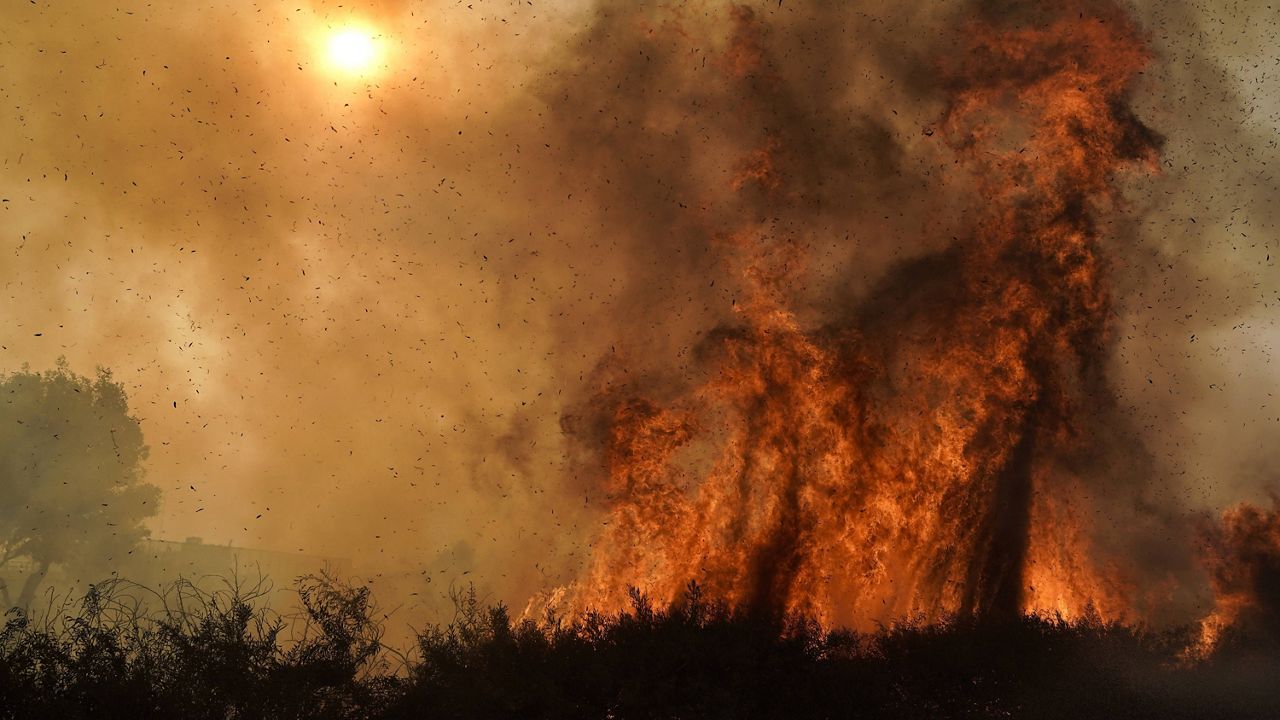SANTA ANA, Calif. (AP) — A firefighter who was badly burned while battling a Southern California wildfire last October will be released from the hospital on Wednesday afternoon, authorities said.
What You Need To Know
- Dylan Van Iwaarden of the Orange County Fire Authority suffered burns to 65% of his body
- He spent 114 days in the burn center and underwent 17 surgeries
- He was one of two firefighters who were critically burned after being trapped by flames in the Silverado Fire
- An OC Fire Authority report concluded that the crew shouldn’t have been in the area because of dangerous conditions
Dylan Van Iwaarden was placed in a medically induced coma, spent 114 days in the burn center at the Orange County Global Medical Center in Santa Ana, and underwent 17 surgeries, according to the Orange County Fire Authority.
He will undergo rehabilitation at the University of California Irvine Medical Center.
Van Iwaarden was 26 when he and another Orange County Fire Authority firefighter, Phi Le, 31, suffered second- and third-degree burns while setting backfires during the Silverado Fire that erupted on Oct. 26 near Irvine.
The blaze south of Los Angeles was contained in November after destroying or damaging 14 homes and other buildings. The fire and another blaze just to the north at one point forced the evacuation of 130,000 people.
A crew of eight was setting backfires to burn up fuel and create a buffer against the advancing flames when a second fire ignited below them. The crew was overrun and had no time to deploy portable fire shelters.
Six reported singed hair, eyebrows, and eyelashes. Van Iwaarden suffered burns to 65% of his body and Le had burns to 50% of his body.
They were trying to fight a spot fire that exploded from the size of a living room rug to a 10,000-square-foot (3,048 square meters) inferno in just five to 10 seconds.
A Fire Authority investigation concluded that the crew shouldn't have been in the area because of extraordinarily dangerous conditions.
The report said firefighters left themselves in danger from unburned fuels, increasing erratic winds, and frequent spot fires.
The speed at which the fire could spread under conditions at the time was at “historical levels,” nearly three times as fast as the previous record for that location, and was “the main factor” in the crew becoming trapped by a spot fire that jumped the safety line, according to the report. There was a possibility that wind-driven embers from the backfires themselves may have trapped the firefighters.
The cause of the fire remains under investigation.



